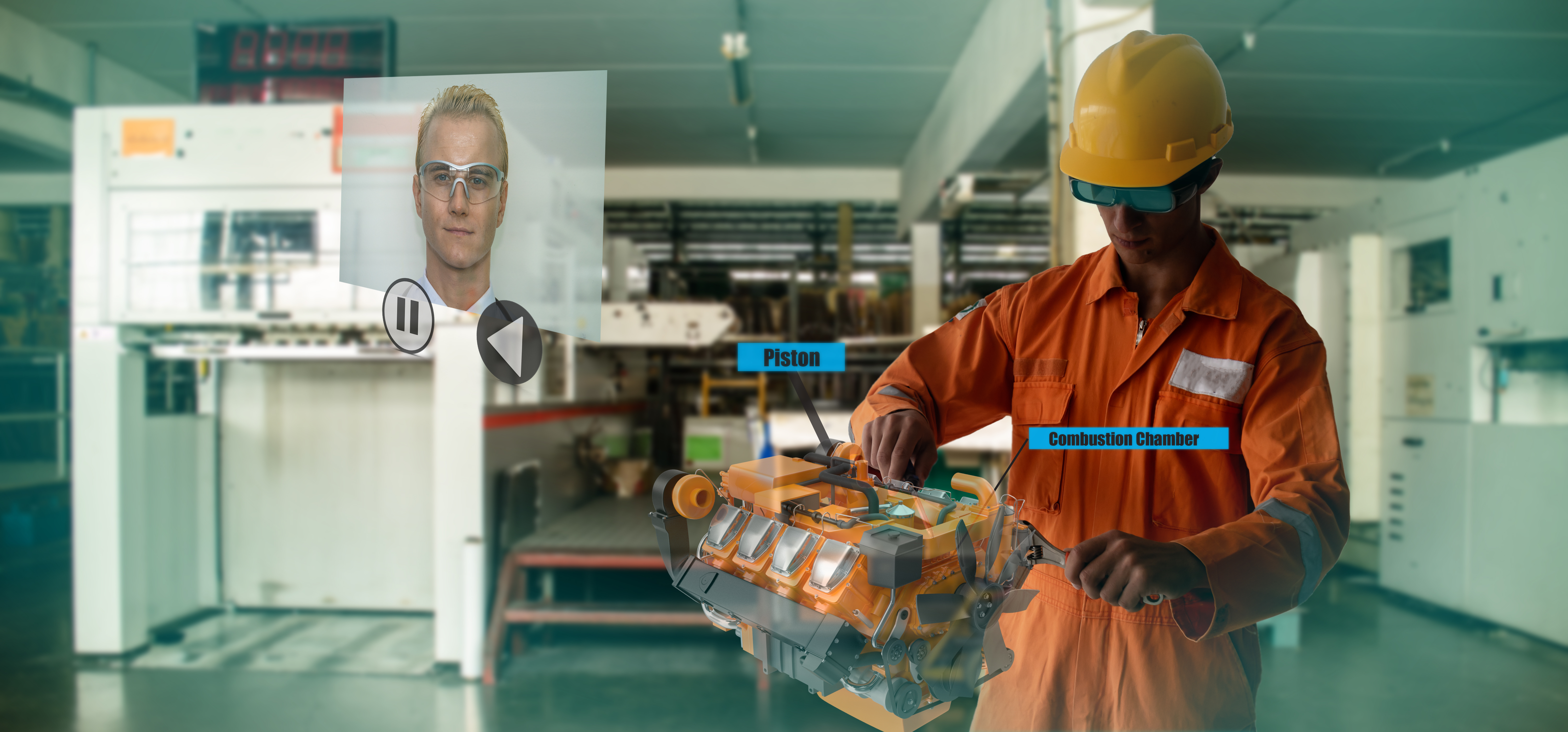Review: The Infinite Retina
by Irena Cronin and Robert Scoble
BY Benjamin Savage
It’s not every day that you have the pleasure of reading a good book that makes you say “wow”. And although there are many different flavors of “wow” books out there (my last “wow” book was Contagious by Jonah Berger), there are rarely those which let you peel back the onion and take a glimpse straight into the future. The wonderful Infinite Retina by Irena Cronin and Robert Scoble is that type of book.
It’s a journey through four paradigms, six technologies and seven visions of industry transformation which leads us all the way from the dawn of the personal computer to the advent of AR-assisted surgery and drone deliveries. We learn with fascination about the possibility of throwing on a pair of Augmented Reality glasses and experiencing a multifaceted and constantly changing augmented world of holograms which we can manipulate with our own hands. Likewise, we recoil in fear at the horrors of a dystopian society with omnipresent facial recognition and artificial intelligence capable of knowing more about you than you do. The book is a delicious 400-ish page buffet: although it’s perfectly enjoyable to read in a linear fashion, many of the chapters are independent which makes it easy to skip around and go to back to the parts which you found most interesting.
And who better to guide us on this journey? The title of the book, in fact, is derived from the authors’ Spatial Computing consulting company of the same name (Infinite Retina). They’ve spent decades peering into the crystal ball of tech trends and, quite frankly, given the information they’re privy to, and the key figures they’re in touch with, if they don’t have a good idea of where things are headed, I have no idea who would. For a mind-broadening experience I highly recommend giving them both a follow on Twitter (Cronin, Scoble).

The book starts off with a definition for Spatial Computing, which, for those of you not in the know, is an umbrella term encompassing all the technologies which enable humans or robots to move through real or virtual worlds. Spatial Computing not only includes the Augmented Reality (AR) / Virtual Reality (VR) / Mixed Reality (MR) trilogy (or the AR / VR duology if you prefer), but also Artificial Intelligence, Automated Vehicles, Sensor Technology and Computer Vision. Each of these elements factor into what the authors call the “fourth paradigm”, which represents the next logical step in the evolution of humankind’s interaction with technology. This paradigm is a direct result of the three previous phases: “The Arrival of the PC”, “GUI and Thinking” and “Mobile”.
But what are the core technologies which will pave the way for spatial computing? Cronin and Scoble delineate six different elements which will drive the Spatial Computing revolution: Optics and Displays, Wireless and Communications, Control Mechanisms (Voice, Eyes and Hands), Sensors and Mapping, Computing Architectures and Artificial Intelligence (Decision Systems). The remainder of part I is spent providing specific examples of how each technology (or combination of technologies) is poised to make an impact in the years to come.

Part II of the book focuses on the role that Spatial Computing has and will have in various industries as the six previously-mentioned technologies come into play more and more. We’re introduced to autonomous vehicles and how companies like Zoox, Waymo and Aurora are gearing up to shape the industry. We’re led through the emergence of virtual worlds and take an exciting tour of all the hardware used to produce them up until now (Hololens, Oculus Quest, Magic Leap, Varjo, etc.). A major nod is also given to the not-yet-officially-announced headset(s) from Apple, which the authors clearly see as a game-changer. The section on virtual worlds ends with a discussion of AR Clouds as well as an analysis of how the entertainment industry is beginning to be impacted by the new technology at our doorstep.
The book then switches gears to a discussion of the ways in which manufacturing will change in the years to come. A very salient and fascinating part of the manufacturing chapter is the concept of “digital twins” which are fundamentally digital copies of a factory which can be visited and interacted with without requiring human presence. Imagine working at an office in, say, Philadelphia, putting on a headset and having the ability to learn about or even monitor or interact with a car factory on the other side of the world! Incredible stuff.

The next section “Robot Consumers”, deals with how Spatial Computing will affect delivery systems (think robot-delivered pizza) and how the entire phenomenon of shopping will be turned on its head as new genres of shops like the checkout-free Amazon Go begin to pop up. Following this is a fascinating glimpse at the future of healthcare and virtual trading / banking.
To close off part II, there is a detailed explanation of how education will be affected by the Spatial Computing revolution. Interestingly enough, as the book was being finalized, the Covid 19 pandemic struck and many families were suddenly introduced to the phenomenon of virtual learning, though, of course, at a level much more primitive than that which the authors expect we’ll eventually reach. Cronin and Scoble give us a peek at the classrooms of the future and introduce the role that Spatial Computing will play in simulation and workplace training.
The final part of the book, Part III, begins with a look at the concept of “predictability” and how it relates to Spatial Computing. It’s followed by a survey of seven interesting case studies about pioneers in various relevant fields. Finally, to keep things grounded and to give a Tylenol to the head-in-the-clouds utopian fever that may arise in the reader, the end of Part III dives into a discussion about the downsides expected to arise as a result of these tectonic shifts.

The Infinite Retina is not a nerd-exclusive handbook, nor is it a college textbook full of daunting technobabble. Most, I think, would say it’s an easy read. The visuals are ample and the descriptions of concepts are broken down efficiently for the non-technical. I’ve even ordered a copy for my mother (not a techie) to help her understand what it is exactly that I do.
The Infinite Retina is the ideal book for tech-enthusiasts, gadget-collectors, the future-inquisitive, and dreamers. But whatever the reader’s background or spheres of interest happen to be, there’s something in it for them as well since, deep down, The Infinite Retina is really a story about our society. I would highly recommend giving it a read.
The Infinite Retina is available on Amazon in paperback and Kindle formats.
You can pick up a copy right here:
If you liked this article try: